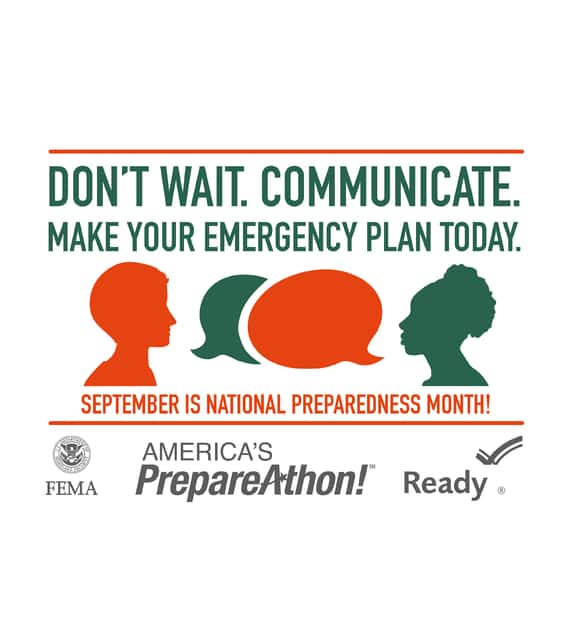
Editor’s note: This is the first installment in a series being printed in September about preparing for emergencies.
When disaster hits, your family needs to be ready. A disaster may require sheltering –in-place at home or evacuating to an emergency shelter or other form of temporary housing. “Shelter-in-Place means to take immediate shelter where you are-at home, work, school, or in between. It may also mean “seal the room;” in other words, take steps to prevent outside air coming in. It is important to listen to TV or radio to understand whether the authorities wish you to merely remain indoors or take additional steps to protect yourself & your family. This is because local authorities may instruct you to “Shelter-in-Place” if chemical or radiological contaminants are released into the environment. Champaign Health District is meeting with local agencies to discuss their disaster plans in the coming months.
Get a kit:
You may need to survive on your own after an emergency. This means having your own food, water and other supplies in sufficient quantity to last at least three days. Local officials and relief workers will be on the scene after a disaster, but they cannot reach everyone immediately. Basic services such as electricity, gas, water, sewage treatment, and telephones may be cut off for days. The following items are recommended for a basic supply kit:
-Water, one gallon per person per day for at least three days, for drinking and sanitation
-Food-easy-to-make & won’t spoil. At least a three-day supply of food
-Battery-powered or hand crank radio and a NOAA Weather Radio with tone alert and extra batteries for both
-Flashlight and extra batteries
-First aid kit
-Whistle to signal for help
-Dust mask, to help filter contaminated air and plastic sheeting and duct tape to shelter-in-place
-Moist towelettes, garbage bags and plastic ties for personal sanitation
-Wrench or pliers to turn off utilities
-Manual can opener for food (if kit contains canned food)
-Local maps
-Cell phone with chargers, inverter or solar charge (Solar/Dynamo/radio with NOAA allows you charge cell phone)
Additional Items to consider:
-Infant formula & diapers
-Household chlorine bleach & medicine dropper – in an emergency, you can use it to treat water by using 16 drops of regular household bleach per gallon of water. Note: (Do not use scented, color safe or bleaches with added cleaners) Note: Boiling is the safest way to clean water, however you can use the household liquid bleach to kill microorganisms. Water Filtration and Purification Tips go to website survival-goods.com/Water Filtration
-Glasses & prescription medications
-Matches in a waterproof container
-Fire Extinguisher
-Feminine supplies & personal hygiene items
-Mess kits, paper plates, cups and plastic utensils, paper towels
-Sleeping bag or warm blanket for each person.
-LifeStraw Personal Water filter &/or water heater adapter to filter water from your water heater for drinking are some items available on-line
Make a plan
Before an emergency happens sit down together as a family develop your own family emergency plan so that every family member knows what to do. Then assemble your disaster supplies kit that includes emergency water & food supplies. Additional assistance www.cdc.gov/phpr/preparedness month
-Develop your own family emergency plan
-Know where your shut off valves are located- gas, water
-Family & emergency contact information
-Extra cash
-Copies of important documents such as insurance, immunization, medical history
-Consider an app such as Family Messenger or Life 360 Family Locator
Be Informed
-Schedule to check for outdates routinely in you disaster kit
-Continue to educate yourself on disaster preparedness. Consider disaster supplies gifts for loved ones.
-Listen to local communications prior, during or after a disaster
The website ready.gov gives tips on making emergency kits and emergency plans Interested in learning more about what you can do to prepare? Schedule a subject matter expert to speak at your club or agency by calling Champaign Heath District at 937-484-1675 or email [email protected].


